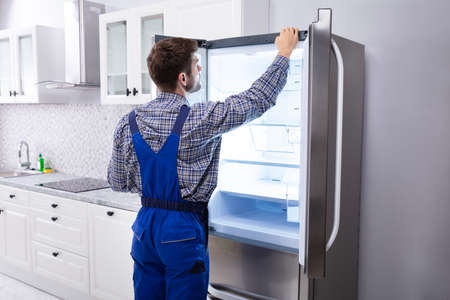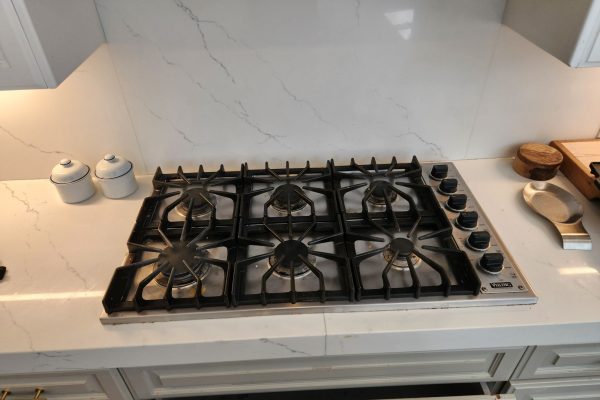Refrigerators are the unsung heroes of our kitchens, silently working around the clock to preserve our perishables and keep our food fresh. One of the key components responsible for maintaining the desired temperature inside the fridge is the cooling fan. This small yet crucial device ensures even cold distribution, preventing hot spots and temperature fluctuations that can lead to food spoilage. However, when this fan malfunctions, it can disrupt the delicate balance of your refrigerator’s cooling system. In this article, we’ll explore the importance of a functional refrigerator fan, common signs of fan issues, and steps to diagnose and address this problem.
The Role of the Refrigerator Fan
Before delving into the intricacies of a defective refrigerator fan, it’s essential to understand its role in the appliance. A refrigerator’s primary function is to maintain a consistent and cold temperature throughout its compartments to keep food fresh. This is achieved through a cycle of cooling, which involves the evaporation of a refrigerant and the circulation of cold air.
The refrigerator fan plays a critical role in this process by:
- Distributing Cold Air: The fan helps circulate cold air evenly throughout the fridge and freezer compartments. This circulation prevents warm air from accumulating near the appliance’s cooling coils, ensuring that the temperature remains consistent.
- Preventing Hot Spots: Even cold distribution prevents hot spots or areas with higher temperatures within the refrigerator. These hot spots can lead to uneven cooling, resulting in certain items freezing while others may not remain adequately chilled.
- Enhancing Energy Efficiency: An efficiently working fan ensures that the compressor doesn’t have to work harder to maintain the desired temperature. This contributes to lower energy consumption and a longer lifespan for your refrigerator.
Common Signs of a Defective Refrigerator Fan
When the refrigerator fan starts to malfunction, several telltale signs may alert you to the issue. Recognizing these signs early can help you address the problem promptly and prevent food spoilage and energy waste. Common indicators of a defective refrigerator fan include:
- Uneven Cooling: One of the most noticeable signs is uneven cooling within the fridge or freezer compartments. You may find that some areas are too cold, causing food to freeze, while others are too warm, leading to premature spoilage.
- Increased Energy Consumption: A malfunctioning fan can cause your refrigerator to work harder to maintain the desired temperature. This increased workload translates to higher energy consumption and, consequently, higher utility bills.
- Audible Noises: If you hear unusual noises coming from your refrigerator, such as clicking, buzzing, or rattling, it could be due to a malfunctioning fan. These noises may occur as the fan struggles to operate or when it becomes obstructed.
- Food Spoilage: Food items that should remain fresh start to spoil more quickly than usual. This includes items such as milk, meat, and vegetables, which can go bad before their expiration dates if the temperature isn’t adequately maintained.
Diagnosing and Addressing the Issue
If you suspect that your refrigerator’s fan is malfunctioning, it’s essential to take action promptly to avoid further issues. Here are the steps to diagnose and address a defective refrigerator fan:
- Safety First: Before conducting any inspection or repair, unplug the refrigerator from the electrical outlet. Safety should always be the top priority when dealing with electrical appliances.
- Visual Inspection: Begin by inspecting the area around the fan. Look for any visible obstructions or damage. Sometimes, debris, ice buildup, or food items can obstruct the fan blades or prevent them from rotating freely. If you find any obstructions, carefully remove them.
- Listen Carefully: With the refrigerator plugged back in (if it was unplugged), listen for any unusual noises coming from the fan area. If you hear grinding, clicking, or buzzing sounds, it’s a strong indicator that the fan motor may be failing and needs replacement.
- Observe Temperature Patterns: Monitor the temperature inside the refrigerator and freezer compartments over a few hours. Use a thermometer to check various areas. If you notice significant temperature variations or hot spots, it’s likely due to a malfunctioning fan.
- Seek Professional Help: If you’re not comfortable diagnosing or repairing the refrigerator fan yourself, it’s best to seek the assistance of a qualified appliance repair technician. They have the expertise and tools to identify the exact issue and replace any faulty components.
- Replacing the Fan: If you have experience with appliance repair and are confident in your abilities, you can attempt to replace the fan yourself. However, it’s crucial to consult your refrigerator’s user manual for guidance and follow safety precautions. Replacement parts can typically be ordered from the refrigerator’s manufacturer or an authorized dealer.
Preventing Fan Issues in the Future
To prevent future refrigerator fan issues and ensure the longevity of your appliance, consider these maintenance tips:
Regular Cleaning: Keep the area around the fan clean and free from debris, dust, and food particles.
Temperature Settings: Avoid setting the refrigerator temperature too low, as this can overwork the fan and other components. Refer to your user manual for recommended settings.
Proper Food Storage: Ensure proper food placement and storage within the refrigerator. Avoid overcrowding, which can obstruct airflow.
Scheduled Maintenance: Consider scheduling routine maintenance checks with a qualified technician to identify and address potential issues before they escalate.
In conclusion, a functional refrigerator fan is vital for even cold distribution and maintaining the freshness of your food. Understanding the signs of a defective fan and taking prompt action can help you avoid food spoilage, higher energy bills, and the inconvenience of a malfunctioning appliance. Whether you choose to diagnose and address the issue yourself or seek professional help, ensuring your refrigerator fan operates optimally is essential for the overall performance of your appliance.
Our services are your reliable way to solve problems with household appliances! If your appliances require repair, don’t worry – contact Oceanside Appliance Service Center and we will help you forget about any inconvenience. Our company has many years of experience in repairing household appliances of various brands and models. Our team of highly qualified technicians has deep knowledge and experience in working with refrigerators, washing machines, dryers, dishwashers, stoves, ovens, and other devices.
Contact us


